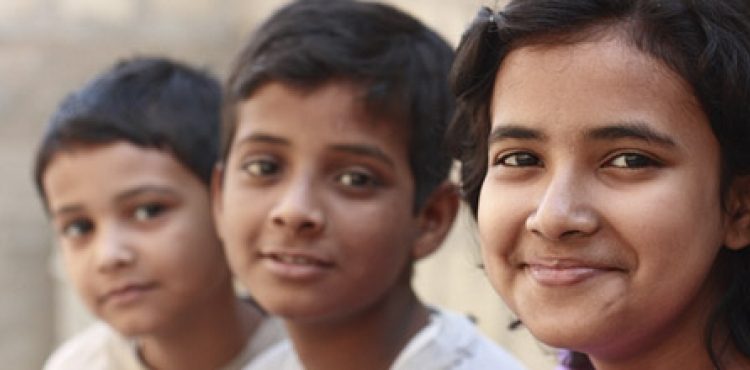
NCDs account for higher number of deaths among adolescents in India
Our analysis of the data from the Global Burden of Disease study by Institute forHealth Metrics and Evaluation reveals that Non-Communicable Diseases (NCDs) and Injuries are a major contributing factor to the greater number of deaths among adolescents.
We found that for both younger and older adolescent boys and for older adolescent girls, non-communicable diseases (NCDs) and injuries are responsible for a higher number of deaths and Disability-Adjusted Life-Years (DALYs) than communicable diseases. Communicable diseases are still a major cause of death and disability for young adolescents. Among older adolescents there is an increasing burden of death and disability due to self-harm, road traffic injuries, fire and heat-related injuries and mental disorders.
Talking about the analysis, Dr. Rohina Joshi, Associate Professor, Faculty of Medicine, UNSW and Senior Research Fellow, The George Institute for Global Health said, “Adolescence is a very critical period of growth for children and there is very little information available on the burden of diseases for this age-group. This is the age-group when children undergo rapid physical and mental developments, which have long-lasting impact on their adult health. This is the stage when they indulge in a lot of unhealthy activities and food consumption which has a direct impact on the onset of several non-communicable diseases (NCDs) such as heart disease and chronic lung disease. This analysis of the GBD data clearly indicates that non-communicable diseases have a major role to play in the death and disability of adolescents in India and this burden is constantly rising.”
This analysis based on GBD data, provides a comprehensive description of the burden of death and disability and the transition over two decades, dis-aggregated by age and sex, for Indian adolescents. The results show that between 1990 to 2013:
Among Young Adolescents (age 10 – 14 years)
- Among girls, death due to injuries increased from 21% to 23%, whereas death due to communicable diseases decreased from 56% to 54% and non-communicable diseases remained stable at 23%
- Among young adolescent boys, death due to injuries and non-communicable diseases increased from 26% to 27%, and 24% to 25%, respectively, whereas death due to communicable diseases decreased from 50% to 47%
- Amongst both girls and boys in this age-group, death due to self-harm showed the greatest increase of 105% and 87%, respectively.
- The largest improvement in deaths amongst both boys and girls were observed for lower respiratory tract infections and tuberculosis which reduced by around 35%.
- Among girls, DALYs from communicable diseases and injuries decreased from 49% to 43% and 14% to 12%, respectively, whereas DALYs due to non-communicable diseases increased from 37% to 45%
- Among boys, DALYs due to communicable diseases and injuries decreased from 46% to 40% and 16% to 14%, respectively, whereas DALYs due to non-communicable diseases increased from 38% to 45%
Among Older Adolescents (age 15-19 years)
- Among girls, death due to injuries and non-communicable diseases increased from 34% to 38%, and 18% to 20%, respectively and death due to communicable diseases decreased from 49% to 42%
- Among boys of this age group, death due to injuries and non-communicable diseases increased from 38% to 43% and 25% to 26%, respectively, and death due to communicable diseases decreased from 38% to 31%.
- The most significant changes in the leading causes of death over the two decades, for older adolescent girls were the increases in deaths due to injuries and specifically those due to self-harm (up by 92%) and road injuries (up by 65%).
- Amongst boys, self-harm and interpersonal violence accounted for almost a 50% increase over the 23 years.
- Among girls, DALYs due to non-communicable diseases increased from 34% to 44%, and those due to communicable diseases and injuries decreased from 42% to 34% and 24% to 23%, respectively
- Among boys, DALYs due to non-communicable diseases increased from 41% to 48% and those due to injuries from 26% to 27%. DALYs due to communicable diseases decreased from 33% to 25%.
- Road injuries were the leading cause of disability among older adolescent boys in 1990 and 2013.
Commenting on the study, Dr. Pallab K. Maulik, our Head of Research division said, “Our analysis shows that adolescents in India face the burden of communicable and non-communicable diseases, thereby highlighting the need for a national health policy which encompasses adolescents and their disease burdens. The Rashtriya Kishor Swasthya Karyakram (RKSK) programme by the Government of India, aims to address the health problems faced by adolescents and young adults, using a holistic model. We need more such programmes which focus on improving nutrition, sexual and reproductive health, enhance mental health, prevent injuries, reduce substance abuse and address risk factors for NCDs.”




